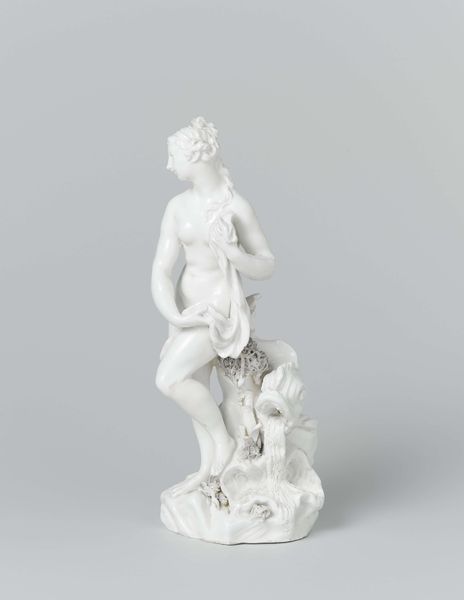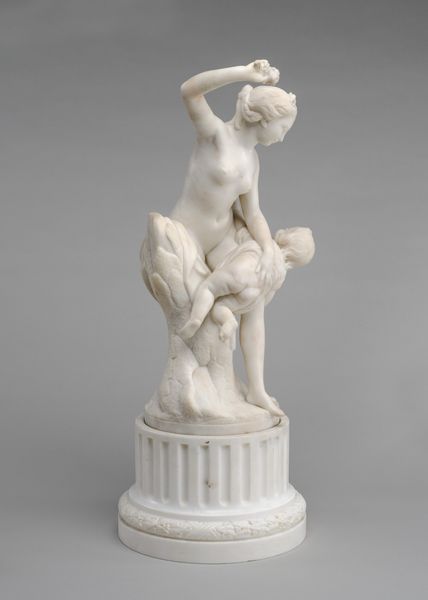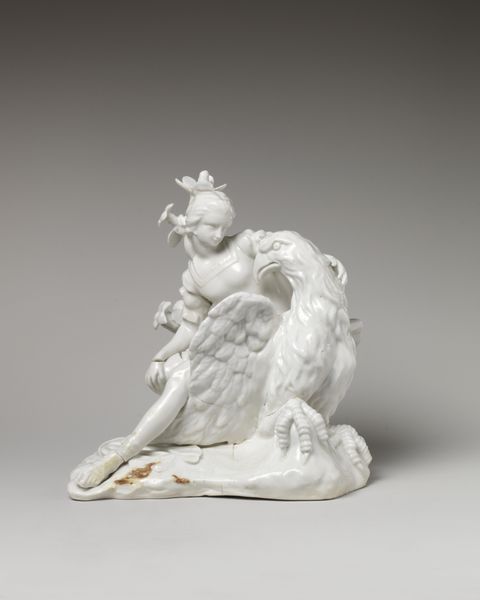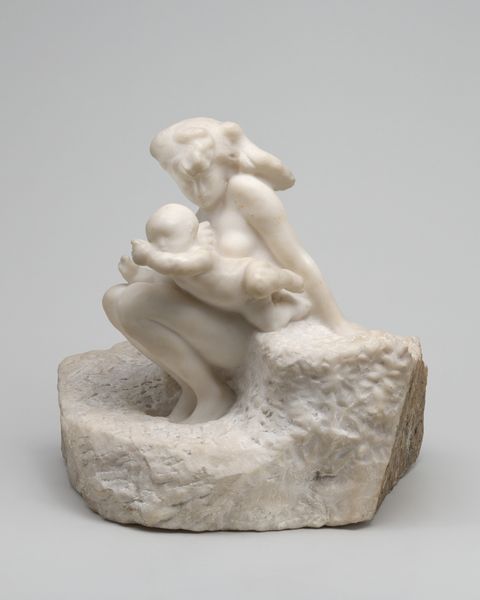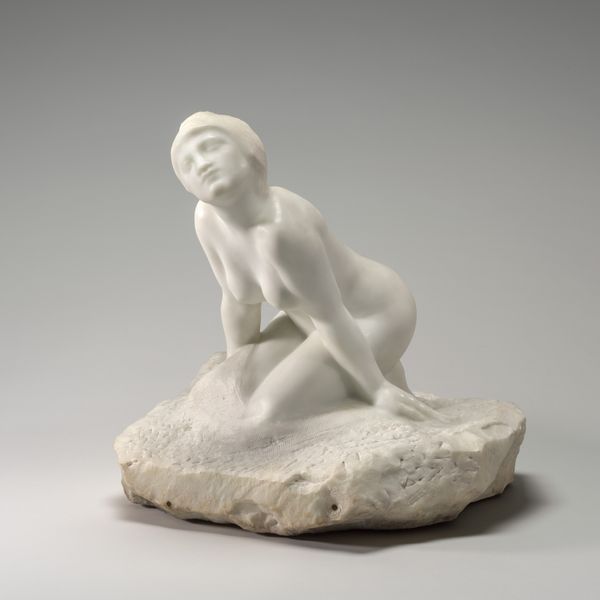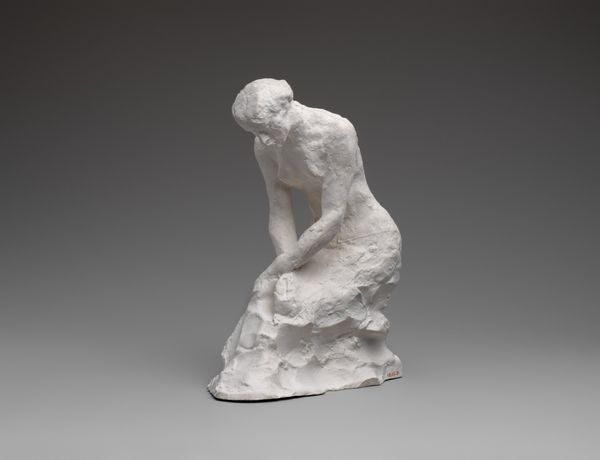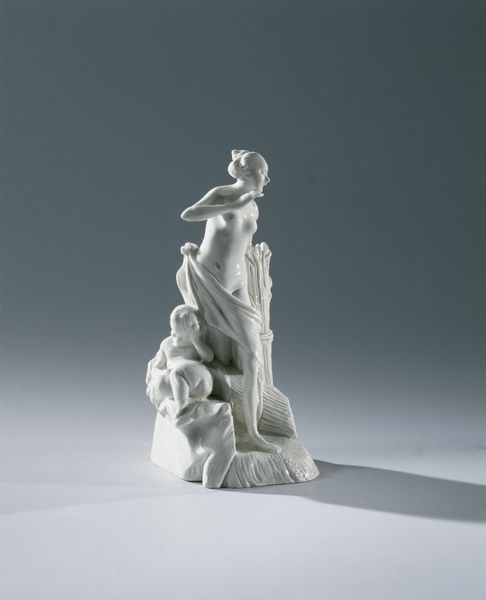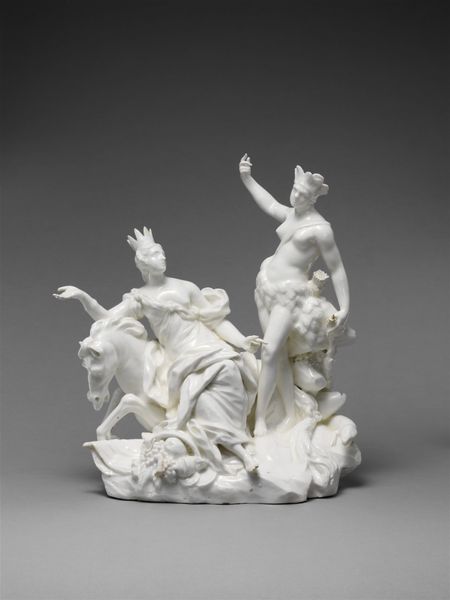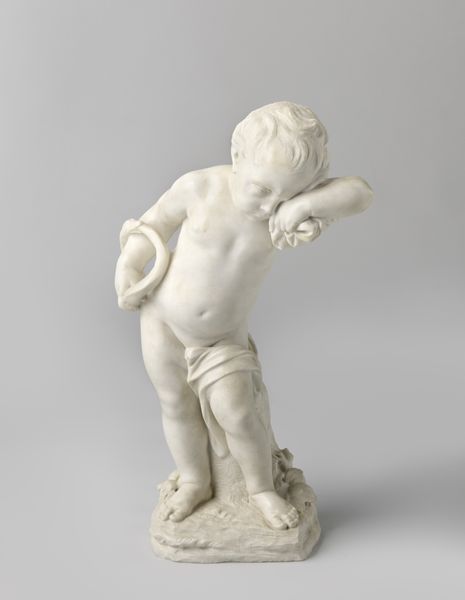
porcelain, sculpture
#
allegory
#
porcelain
#
figuration
#
sculpture
#
miniature
#
rococo
Dimensions: height 14.4 cm, width 7.7 cm, depth 6.2 cm, width 5.5 cm, depth 5.5 cm
Copyright: Rijks Museum: Open Domain
Curator: Immediately I am struck by its luminous quality, that crisp white porcelain gives the whole composition an ethereal, almost dreamlike feel. Editor: We're looking at "De Lente, uit een serie van de Vier Jaargetijden" or "Spring, from a series of the Four Seasons", created around 1760-1763 by the Weesper porseleinfabriek. It's a miniature porcelain sculpture. Curator: The small scale is interesting too. Was porcelain sculpture common? What function would a piece like this serve at that time? Editor: Porcelain figurines like this reflected broader European trends for decorative arts. Weesper porcelain tried to emulate Meissen, but through unique approaches. It served as a luxury good for the Dutch elite and was influenced by shifting social mores. The all-white glaze is fairly standard. These porcelain factories existed under specific social constraints; this piece likely reflects ideas of femininity or ideal notions of spring in art during that time. Curator: Let’s delve a little deeper. From a material perspective, the porcelain itself is quite significant, particularly when contextualizing craft in that period, it almost transcends its status as simply decorative due to the alchemic production process and associated status. Editor: Agreed. This period grappled with shifting identities between public and private and a rise of bourgeoisie interests and tastes, and the way spring is portrayed as an allegorical figure really underscores that. Looking closely, the woman’s modest semi-draped stance alongside Cupid presenting flowers creates this duality between sensuality and propriety that speaks to complex societal values in flux at that time. Curator: I find the level of detail in something so small very captivating. Each fold of drapery seems carefully considered, testament to the artist's mastery of the material. The production would involve an extensive apprenticeship and skill. Editor: Absolutely, thinking about how art interacts and actively responds to broader themes allows for richer engagement, because it acknowledges not only art history but also lived experience. It also contextualizes porcelain factories within networks of colonialism and global trade, raising awareness of the materials' complex origins and historical impacts. Curator: I concur. The more one examines this porcelain artwork, the richer and more compelling it gets. Editor: Yes, situating artwork in relation to historical and social dimensions allows opportunities to open up nuanced dialogues on identity and history and labor and context beyond aesthetics alone.
Comments
No comments
Be the first to comment and join the conversation on the ultimate creative platform.



